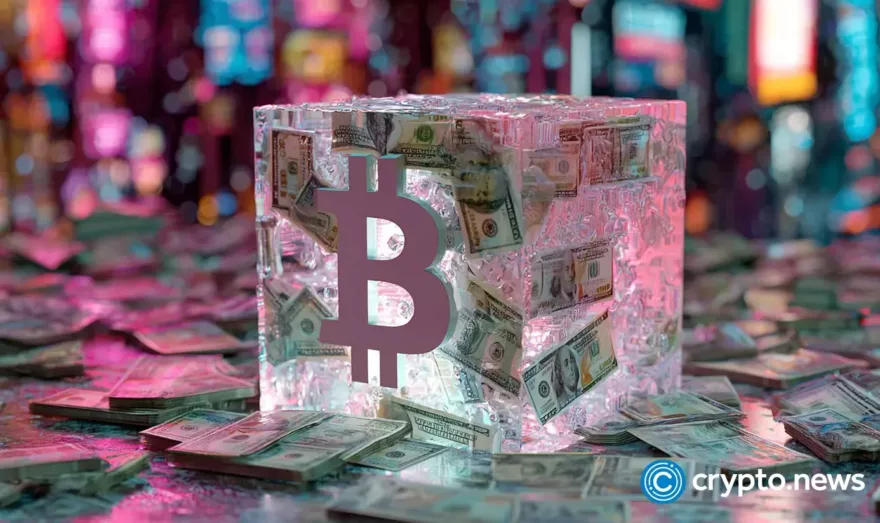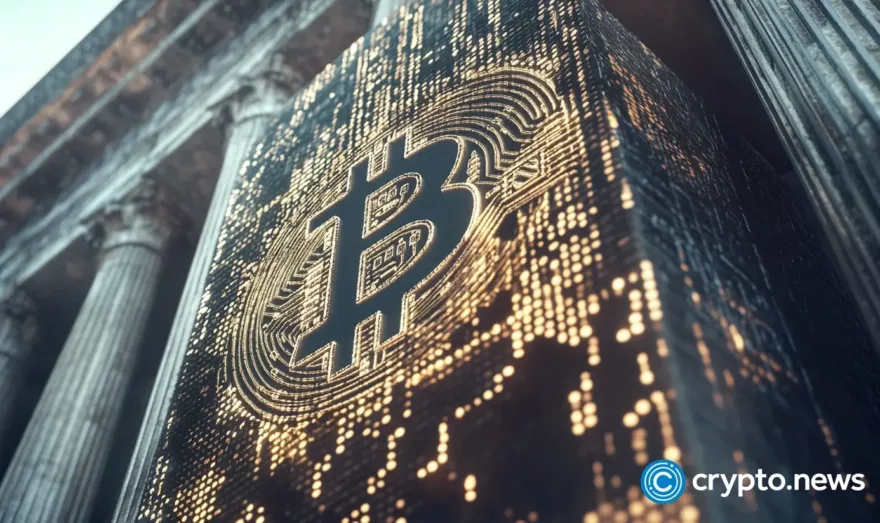Stormy Weather: How the Hard Fork Crisis Evolved Over a Weekend

Since March 17, the possibility of a Bitcoin Unlimited hard fork has not ceased to dominate the discussion in the Bitcoin community. From the statement of the exchanges to list Unlimited as another asset to BitClub mining a block signaling support for the alternative client – we provide the details on what happened.
Wow. For Bitcoin journalists, the weekend beginning March 19 was everything but relaxing. One event fell on to the next, and the discussion heated up on every channel. The possibility of a hard fork between Bitcoin Core and Bitcoin Unlimited awakened fear, fuels emotions and breaks through in naked anger. Everybody seems to be invested emotionally. It seemingly is about everything or nothing.
The base of all the events is that the Bitcoin miners started to mine more and more with an alternative Bitcoin client called Bitcoin Unlimited. This might help to increase the capacity of Bitcoin, but threatens to activate a hard fork which risks to end with two persisting versions of bitcoin.
Over the weekend of March 18-19, the course of events went something like this; first nearly 20 exchanges released a statement which outlined how they will react on a Bitcoin Unlimited hard fork. Following this the exchange Bitfinex started the trading of hard fork futures. Meanwhile, AntPool finished the migration of its servers, and the share of Bitcoin Unlimited blocks reached more than 40 percent of the hash rate. Bitcoin Core developer Peter Todd was worried enough about this “attack” to tweet about a PoW change project against the miners. With this, however, Todd even antagonized the Core-supporting miners like BitFury and BitClub. The markets reacted highly concerned and continued to evade into altcoins.
Now let’s work through the details!
Exchanges declare to list a Bitcoin Unlimited fork as an Altcoin
On March 17 Coindesk reported on the statement of nearly 20 exchanges, in which they laid out how they would deal with a hard fork activated by Bitcoin Unlimited. The original text was published by Coindesk on Scribd. Most prominent exchanges under the signers are BitStamp, Shapeshift, BTCChina, Kraken, Bittrex and Bitfinex. They write:
“We’d like to take the time to update the community on the procedure that we, as an industry, intend to follow in the event of a contentious hard fork activating on the Bitcoin network.“
The exchanges explain that they do not want to “pass judgment on such an event. If miners want to direct their hashing power to an alternative and incompatible protocol implementation, that is their right.” The exchanges believe, however, that a hard fork needs to be done with the consensus of miners and users, and this is not given at this time.
“In the case of a Bitcoin hard fork, we cannot suspend operations and wait for a winner to emerge. Many of our platforms allow leveraged trading that requires markets to operate continuously. Due to operational requirements alone we are compelled to label an incompatible fork as a new asset. Since it appears likely we may see a hard fork initiated by the Bitcoin Unlimited project; we have decided to designate the Bitcoin Unlimited fork as BTU (or XBU). The Bitcoin Core implementation will continue to trade as BTC (or XBT).”
The exchanges declare to give Bitcoin Core the ticker moniker BTC even in case the Bitcoin Unlimited’s fork has more hashing power.
Some of the exchanges want to introduce trading with BTU and take the necessary steps to enable it. “However, none of the undersigned can list BTU unless we can run both chains independently without incident. Consequently, we insist that the Bitcoin Unlimited community (or any other consensus breaking implementation) build in strong two-way replay protection. Failure to do so will impede our ability to preserve BTU for customers and will either delay or outright preclude the listing of BTU.”
Replay attacks mean that someone exploits the fact that during a hard fork transactions are potentially valid on both chains, but it is possible to double spend them on one arm of the fork. Replay attacks can cause confusion and losses of exchanges when they cease to clearly identify on which chain a transaction has been confirmed. For example, during the Ethereum hard fork, it was possible to fund some accounts with ETH but withdraw both ETH and ETC. Protection against replay attacks can be implemented by changing the transaction format, which, however, would break compatibility with every existing Bitcoin application.
Changes in the Document
Shortly after the release, both the document and the Coindesk article have been edited. Eric Vorhees from ShapeShift and Jesse Powell from Kraken publicly complained that something was changed after they signed but stepped back later and declared that it was a misunderstanding of their own. Also, Bittrex complained about it.
A comparison between both versions reveals that, if authentic, two points have been changed; firstly, the note was deleted that the exchanges might change the ticker symbols if one chain undoubtedly becomes the dominant chain, which means that BTU would have the chance to become BTC. Secondly, the request for Bitcoin was formulated significantly stricter.
Two readings of the statement
It is possible to read the statement in two ways. The radical variant goes along the lines that the exchanges will reserve the BTC moniker exclusively for that Bitcoin implementation maintained by a group of developers called Bitcoin Core, independently from the hash rate and the ecosystem.
The second, less radical variant goes like that the exchange will give the legacy moniker BTC to the chain which does not start the hard fork. New fork means new ticker symbol. But the exchanges keep the right to change the ticker symbol in case the chain which forked first proves itself to command clear support from both miners and users.
But how you can measure the support of “users”? The further events of the weekend gave a first glance on how the ecosystem might answer this question.
Coinbase
Coinbase, the largest exchange for the US market, rejected to sign the statement. On March 19 it gave a short note about how they would deal with the fork:
“The only version of Bitcoin supported on the Coinbase platform today is Bitcoin Core, currently represented by the symbol BTC. We may provide support for Bitcoin Unlimited in the future depending on market conditions and stability of the protocol, but we cannot guarantee whether or when such support may be available.”
Coinbase recommends customers “who wish to access both blockchains at the time of the hard fork” to withdraw the coins, as the exchange “cannot guarantee what will happen during the hard fork or when this access may be available.”
If a chain is supported by an overwhelming majority of miners, users and exchange, Coinbase reserves the right to alter the ticker name of the chains or discontinue support for one.
Preceding the statement, Coinbase CEO Brian Armstrong explained on Reddit, why he did not sign the statement of the other exchanges:
“But my concern was that it was actually a thinly veiled attempt to keep the BTC moniker pegged to Core software. I think a number of people who put their name on it didn’t realize this.”
In general, however, Armstrong supports the idea to list a fork chain first as a new moniker. He also consents that relay attacks are a serious problem and that the developers of a forking chain should make an effort to protect business’ from losses by replay attacks. But he understands that Bitcoin Unlimited does not want to pay the price of changing the transaction format, as this would break compatibility with a lot of applications like SPV and light wallets, while they would remain unaffected by a pure increase of the block size limit. Armstrong votes for having constructive talks about how to protect against replay attacks.
The Price
The market reacted to the exchange’s statement with naked dismay. Nearly immediately after the release the price crashed. From $1,150 the price fell to $950, but stabilized around $1,050. The rally of Altcoins, however – chiefly Ethereum and Dash – continued. The bitcoin dominance index, which measures the share of bitcoin of the market capitalization of all cryptocurrencies, fell to a record low of 70 percent.
The reason why the market reacted such is down to speculation. One could say that the exchange’s statement made it clear that a hard fork will come, and the markets are in fear of a hard fork in general, as it comes with a lot of risk and uncertainty. On the other side, you could say that the statement of exchanges made a success of Bitcoin Unlimited, and with this a future of organic on-chain scaling, less likely. It can be seen this or that way.
Maybe the markets are just tired of the years of block size wars and stagnating capacity faced with strong demand. Maybe they are on brink of giving up hope that the Bitcoin community will ever reach unity and consensus, as the debate reached a level of toxicity and hostility in which more and more actors seem to be rather willing to burn down everything than to seek a compromise.
Bitfinex Enables Trading of Chain Fork Token
After signing the statement, the exchange Bitfinex waited no longer than a day to profit from the crisis. It offered Chain Fork Token (CFT), which are something like Futures on both sides of the fork, BCC and BCU. The CFTs remain valid until the end of 2017. If a fork happens during this timeframe, the BCC token automatically transforms to Bitcoin Core units (BTC), while the BCU token becomes Bitcoin Unlimited Coins (BTU). Bitfinex makes it possible to split a Bitcoin in a Core and an Unlimited coin right now. If there is no fork until the end of 2017, the BCU token vanishes without any compensation.
The product is, as a whole, more than problematic, as BCU token even vanish if Core follows a Bitcoin Unlimited fork. But after all it is a first attempt to answer the hard question, what does the user want? Right now it seems that the users are not interested in the product. The trade volume is tiny, and the price of a Bitcoin Unlimited token settled along 0.25 bitcoin after it jumped between 0.2 and 0.3.
Blocks mined with Bitcoin Unlimited reach a Hash rate Share of up to 40 percent
AntPool, the world’s biggest Bitcoin mining pool, has shifted its servers successively to mine Bitcoin Unlimited. Over the weekend in question, the pool finished this process nearly completely. The result was that the share of the hash power voting for Bitcoin Unlimited reached a new high with temporarily more than 40 percent.
If you add the fact, that BW Pool with a hash rate of around eight percent votes for 8MB blocks since a long time, you could see that for some hours more than 50 percent of the daily hash rate agreed with a block size increasing hard fork. From an option far away this event did come terrifying close.
Peter Todd: A PoW change as a backup plan
For a part of the Bitcoin community the current situation is an attack. The miners, maybe in cooperation with the Chinese government, empower themselves to change the rules of Bitcoin against the will of the majority of users. Although Bitcoin Unlimited does just empower the miners to empower itself, it is already seen as a major thread.
A tweet of Core developer Peter Todd from the weekend demonstrated how serious some consider this risk, and how far some want to go to counter it:
With some miners threatening 51% attacks against Bitcoin, researching a PoW change is a good backup plan: https://t.co/SEZ1qlxhAH
— Peter Todd (@peterktodd) March 19, 2017
For those, who do not know; PoW is the abbreviation of Proof of Work and means the cryptographic algorithm the miners use to find a block. If the developers and the ecosystem decide to use another algorithm, the large investment of the miners in mining hardware would be rendered worthless overnight. This option, sometimes tagged as the “nuclear strike,” is the last resort of the network, if the miners conspire to destroy Bitcoin.
As the User-Activated Soft Fork (UASF) this “nuclear strike” could become a valuable tool to prevent that the miners act reckless in a world of Bitcoin Unlimited’s emerging consensus.
BitFury is not amused
BitFury is the producer of Bitcoin mining hardware and with ten percent of the global hash rate the biggest solo-miner of the world and the largest mining supporter of Core’s SegWit. George Kikvadze, vice chairman of BitFury, reacted outraged on the talk about a PoW change.
1/3 Discussions (or even speculation) of PoW change are super irresponsible! And even in the remote 0,01 prc chance it may happen …
— George Kikvadze ⛏⚡ (@BitfuryGeorge) March 19, 2017
But Kikvadze did not stop by calling these ideas irresponsible. He also threatened to take them to court:
2/3 .. those responsible, we will spare no resources, get best lawyers and prosecutors to go after you wherever you will be in the world!
— George Kikvadze ⛏⚡ (@BitfuryGeorge) March 19, 2017
Shortly before, Kikvadze also tweeted that he met with Jihan Wu from Bitmain/AntPool and did,in general, enjoy good meetings in China. Kikvadze is optimistic, that the scaling problem will be solved and encourages everybody to stop the permanent attacks.
The first answer Kikvadze got on Twitter was an attack on Jihan Wu. Disgusted by the instinctive and ugly reaction the BitFury chair announced just to block those who are constantly attacking and name calling.
It should be noted that BitFury has reached an extremely interesting position in the hard fork drama; as the biggest miner signalling support for SegWit, around 40 percent of SegWit blocks are mined by BitFury, the company could become the tipping point; the ultimative swing miner in this neverending experiment in decentralized governance. If BitFury changes sides, the debate is over.
BitClub mines a BU block
The mining pool BitClub is somehow affiliated with BitFury and also had been signaling for SegWit immediately after the release in November. Shortly after the twitter discussion about the PoW change BitClub released a block which signals both SegWit as Bitcoin Unlimited with an excessive block size of 1MB and an acceptable depth of 9999999, which is in fact the same as Bitcoin Core, but with a reservation to change this in the future.
According to sources from Bitcoin.com the Bitclub network operators had significant issues with unconfirmed transactions of their members and have reached a point of frustration with the capacity stagnation and fear that an altcoin takes away Bitcoin’s lead. With the switch to Unlimited, they want to help upgrading Bitcoin for more transactions.












